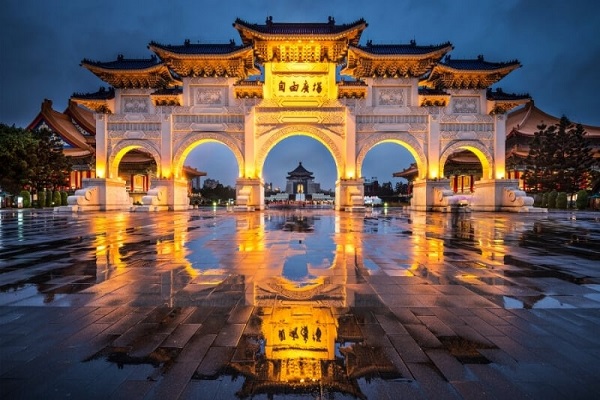Unveiling the Grandeur of Agra Fort : A Journey Through India's Majestic History

Agra Fort, one of India’s most iconic and historical monuments, stands as a testament to the Mughal Empire's grandeur and architectural brilliance. Located just a short distance from the Taj Mahal in Agra, this UNESCO World Heritage Site is not just a fort but a captivating glimpse into India’s rich history and royal past.
A Historical Overview
Agra Fort, also known as the Red Fort of Agra, was originally built by Emperor Akbar in 1565. The fort served as the primary residence of the Mughal emperors until 1638 when the capital was shifted to Delhi. Over the centuries, the fort has witnessed the rise and fall of emperors, with each adding to its architectural beauty and cultural significance. The fort was expanded and modified by various rulers, especially Akbar’s successors, Jahangir, Shah Jahan, and Aurangzeb.
Constructed using red sandstone, the fort stands as an imposing symbol of Mughal power, grandeur, and architectural finesse. Initially a military structure, Agra Fort later transformed into a royal residence that housed numerous palaces, mosques, and audience halls. Its strategic location by the Yamuna River not only offered military advantages but also served as a beautiful setting for the royal court.
Architectural Brilliance
Agra Fort’s architectural design is a stunning example of Mughal artistry, blending Islamic, Persian, Ottoman Turkish, and Indian elements. Its massive walls stretch 2.5 kilometers, enclosing a vast area filled with buildings, gardens, and courtyards. The fort’s design reflects the era’s splendor and the Mughal rulers’ love for aesthetics and grandeur.
Some of the most significant structures within the fort include:
*Jahangir Mahal: Built by Emperor Akbar, this palace was intended for his beloved wife, Mariam-uz-Zamani. It is one of the most exquisite buildings in the fort, adorned with intricate carvings, marble, and a grand central courtyard.
* Diwan-i-Am (Hall of Public Audiences): This is where the emperor would hold public meetings and listen to the grievances of his subjects. The hall is renowned for its ornate architecture, with a large central platform and intricate designs.
* Diwan-i-Khas (Hall of Private Audiences): This hall, constructed by Emperor Shah Jahan, was used for private meetings with dignitaries and important officials. The hall is a masterpiece of Mughal craftsmanship, with delicate marble inlay work and a central marble platform used by the emperor.
* Sheesh Mahal (Palace of Mirrors): Known for its mirror-work, this palace once dazzled visitors with its reflective surfaces, where the slightest light would be reflected, creating a stunning effect.
The fort’s design and structure reflect the rich Mughal tradition of combining both beauty and functionality. The fine blend of red sandstone and white marble adds to the majestic aura of the fort, while the open courtyards, lush gardens, and intricate decorative features speak to the luxury and elegance of the royal lifestyle.
A Glimpse of Royal Life
Agra Fort provides a unique and intimate look at the lifestyle of Mughal royalty. The fort’s vast courtyards, opulent rooms, and ornate gardens speak volumes about the grandeur and luxury enjoyed by the emperors. The fort also served as a place of administration and governance, hosting important meetings and celebrations.
One of the most poignant stories related to Agra Fort is that of Emperor Shah Jahan’s imprisonment. In 1658, Shah Jahan was imprisoned by his son, Aurangzeb, and spent the last years of his life under house arrest at Agra Fort. It is believed that from his prison quarters, Shah Jahan had a clear view of the Taj Mahal, the mausoleum he built in memory of his wife, Mumtaz Mahal. This view of the Taj from the fort is considered a tragic and symbolic reminder of the emperor’s lost love.
Strategic Significance
Besides its beauty and architectural marvels, Agra Fort was of immense strategic importance. Positioned on the banks of the Yamuna River, the fort was a stronghold that offered military advantages. The fort's formidable walls, massive bastions, and large gates made it difficult to breach, serving as a defense mechanism for the Mughal Empire during its prime.
The fort was designed not just as a royal residence but also as a symbol of Mughal power, showcasing their ability to control and protect their territory. It became a seat of power and a military base from which the Mughal emperors controlled the vast regions of India.
The Modern-day Agra Fort
Today, Agra Fort stands as one of the most visited monuments in India, attracting millions of tourists from across the globe. It remains a symbol of India’s rich Mughal heritage and serves as an educational resource for history enthusiasts. The fort offers guided tours and exhibitions that provide insight into the history of the Mughal Empire, the architectural brilliance of the period, and the lives of the emperors who once resided there.
Visitors can explore the various structures inside the fort, each with its own historical significance. The fort also offers stunning views of the Taj Mahal from several vantage points, allowing visitors to capture the breathtaking beauty of both monuments in one frame.




















